Since the sport’s beginnings, there have been two distinctly different approaches to making mountain bike suspension forks.
While conventional forks dominate, inverted forks – which place the stanchions at the base of the fork – have been periodically popular, with a number of brands still producing inverted (otherwise known as upside-down forks) today.
But what exactly are inverted forks, and are they any different from conventional designs when it comes to performance? Let’s explore the design, pros and cons of upside-down forks.
What are inverted mountain bike forks?
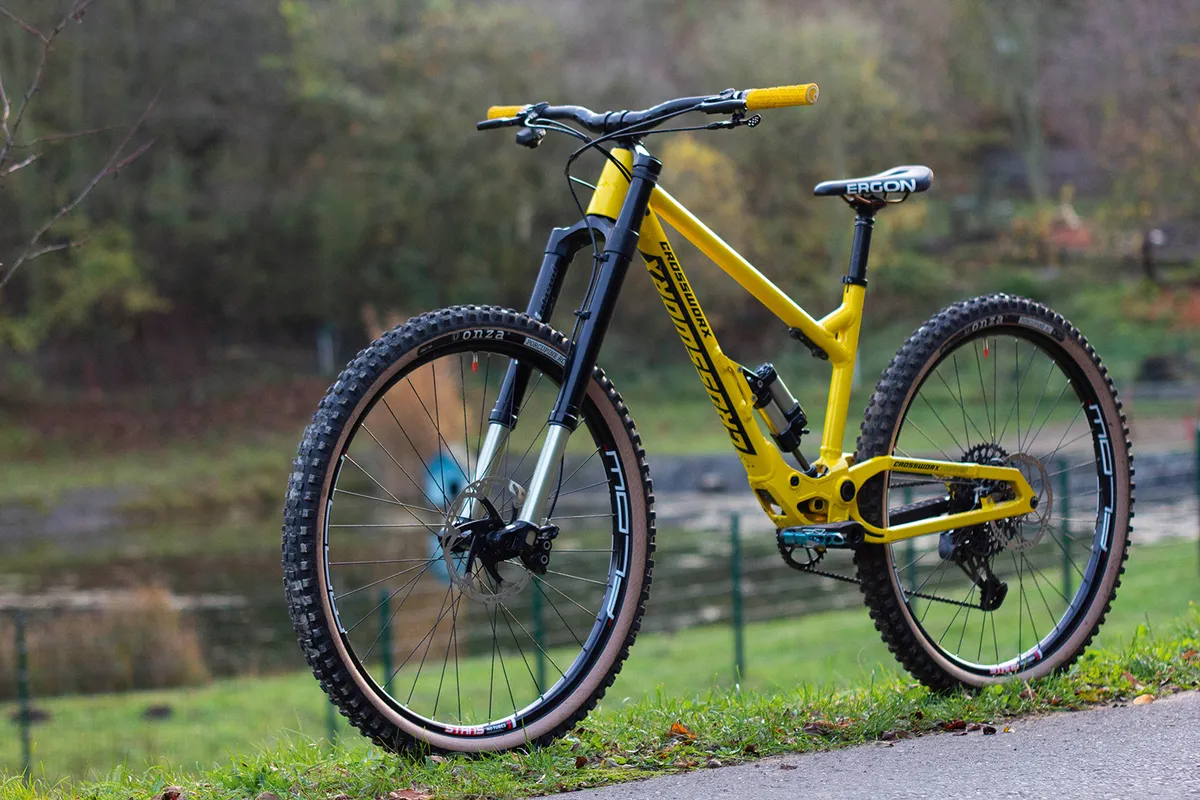
Inverted forks, sometimes referred to as upside-down forks, are just that. They take the common design of the best mountain bike forks and turn it upside-down.
Originally based on the design of motocross forks (where they are still popular), inverted mountain bike suspension forks have been on the scene since the early 1990s, with the Halson Inversion fork. Since then, the design has been used across all disciplines of mountain biking, from downhill to cross-country.
An inverted fork has its stanchions at the lowest point, closest to the front axle. The fork uppers follow, with seals, oil and bushes, just as the lowers would on a conventional fork. Depending on its intended use, a single- or double-crown braces the fork legs around the frame’s head tube.
Are inverted forks a new trend?
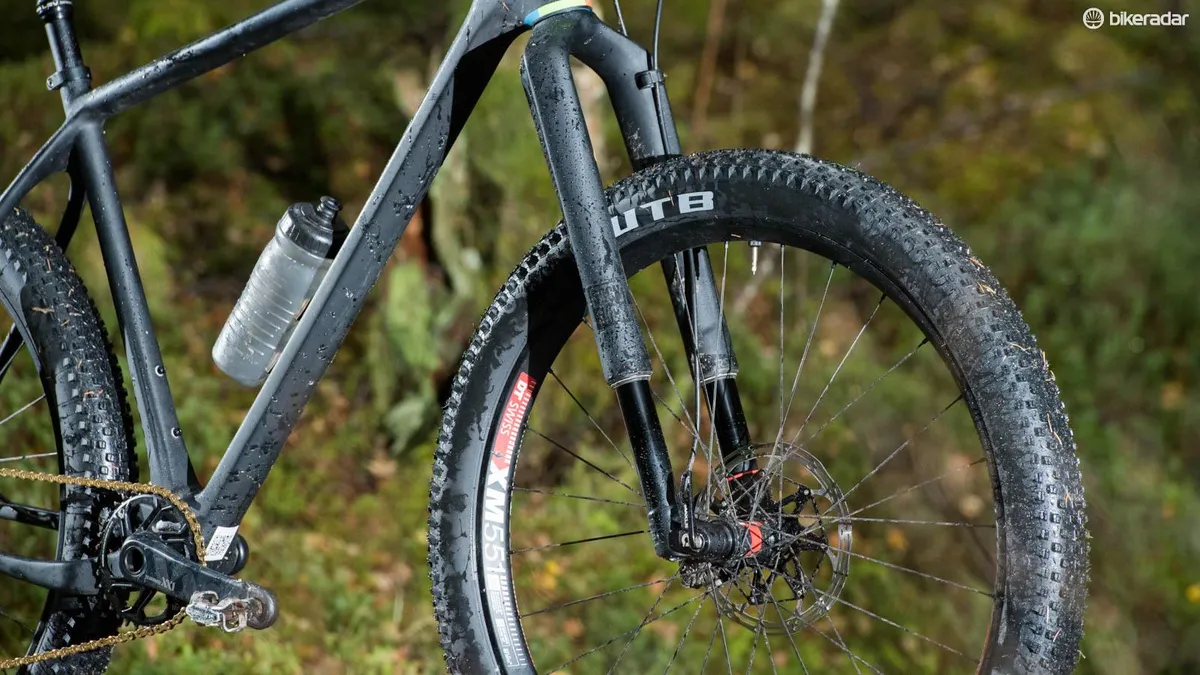
Inverted MTB forks, such as the original Bos Obsys, first appeared on the downhill race scene in the 90s and were used to great success by the likes of Nico Vouilloz. One of the most iconic inverted forks is the Manitou Dorado, which still has a cult-like following in the world of downhill.
However, upside-down mountain bike forks weren’t just for downhillers. In 2014, RockShox announced its first inverted fork, called the RS-1, reviving the brand’s debut model name. Designed for cross-country use, the RockShox RS-1 had 100/120mm travel options and was designed for use with 29in wheels. It was discontinued in 2018.
While inverted forks, such as the Cannondale Lefty, are still seen in the cross-country world today, the majority of new forays into the upside-down market have their intentions set on aggressive trail and enduro riding.
How do inverted mountain bike forks work?
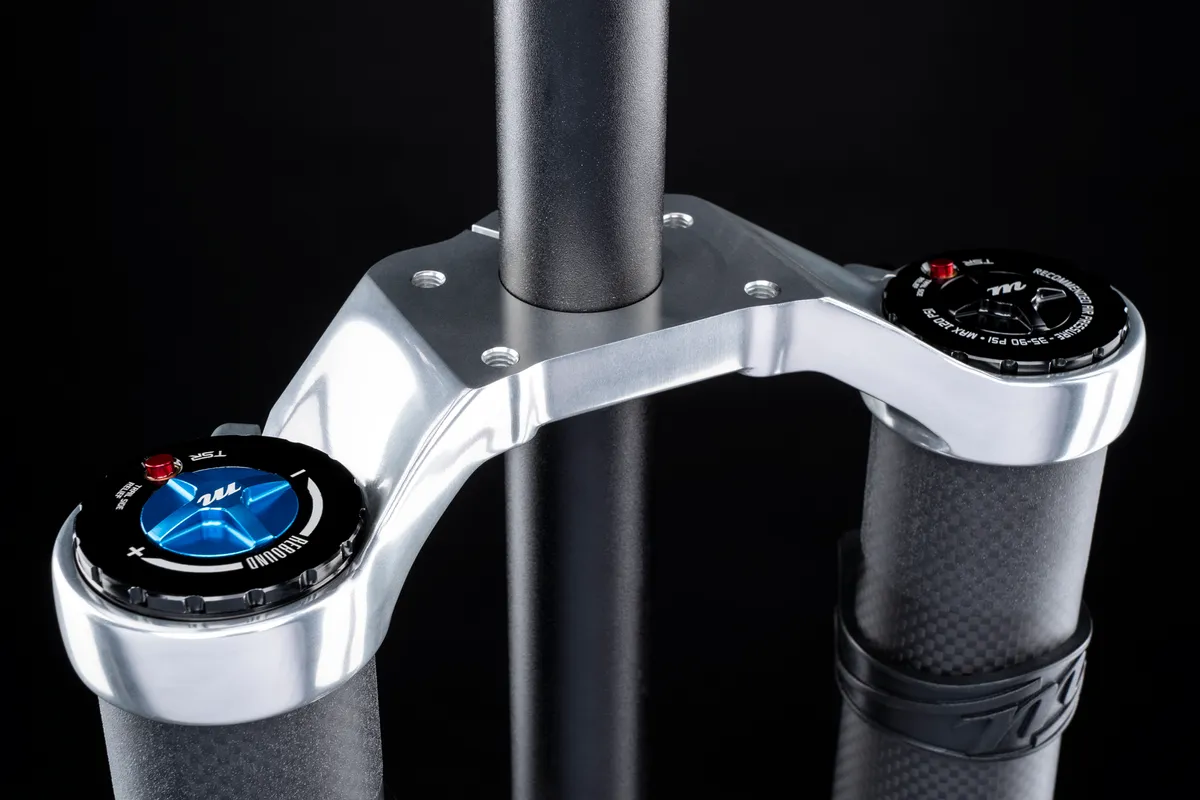
The basic function of inverted mountain bike forks is very much the same as regular forks. A tunable spring (air or coil) absorbs impacts from the trail, and the way it does so is further tuned by compression and rebound damping.
What are the benefits of an inverted fork?
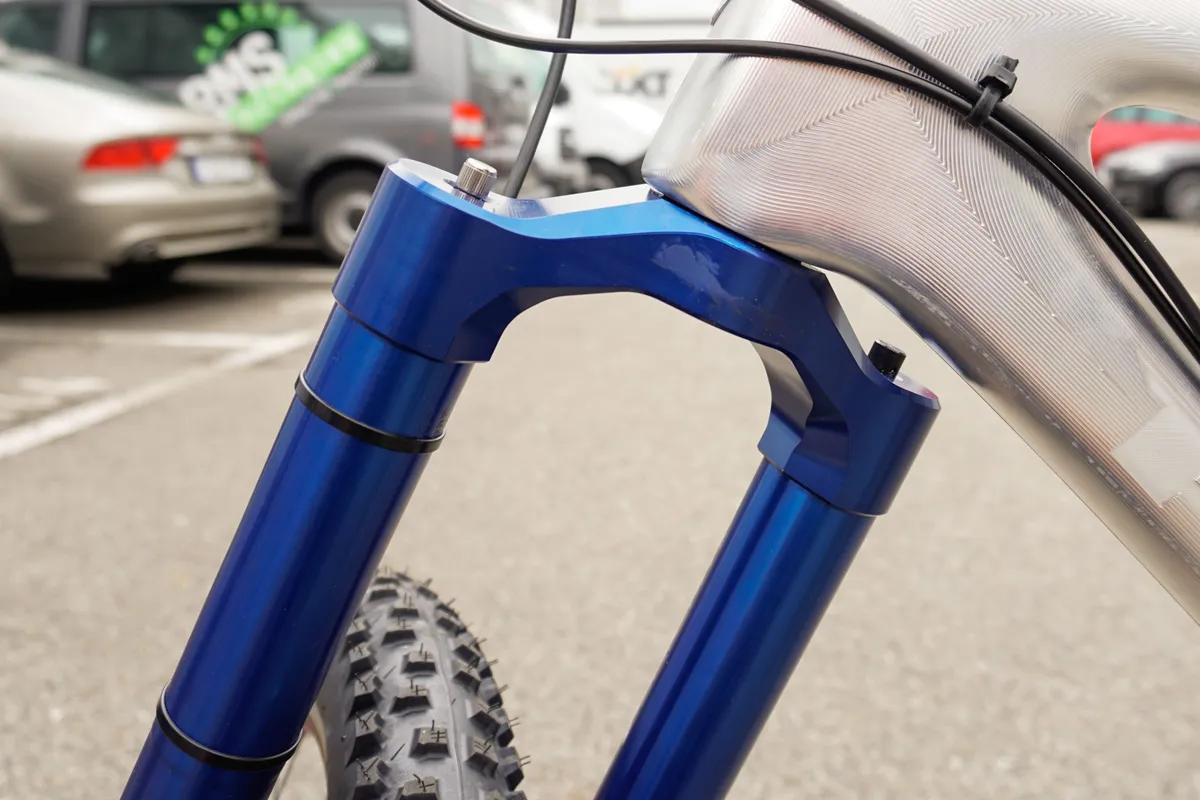
However, by inverting the fork, some key differences are created in its performance.
When a conventional suspension fork absorbs an impact, the front wheel and fork lowers rise as the fork compresses.
In theory, the lighter the moving part of the fork (the unsprung mass), the less upward force from the trail is required to move it. Therefore, a fork with less unsprung mass will be more sensitive than a fork with a higher unsprung mass.
An inverted fork design enables manufacturers to reduce the unsprung mass of the fork by placing the fork stanchions below the spring and the heavy ‘lowers’ (uppers, in this case) above it.
Inverted forks are also claimed to be more sensitive than conventonal forks. Due to the upside-down design, the suspension oil (which keeps the internal seals and bushes lubricated) naturally gathers in the bottom of the fork leg, where the seals and bushes are located. This means the stanchions, seals and bushes are continuously lubricated and should result in smoother suspension performance.
A third benefit comes from improved fore/aft stiffness. The greatest bending moment for flex in that plane is around the crown/stanchion interface and, with an inverted fork, this is stiffer because the upper tubes are thicker and stronger than stanchions. This reduces fore/aft flex and possible binding during compressions, improving performance.
What are the downsides of an inverted fork?

So, if the benefits are improved sensitivity and smoother fork performance, why aren’t all mountain bike forks upside-down?
The most common downside of inverted mountain bike forks is a lack of torsional stiffness. This is due to the lack of a brace between the two fork legs, as seen on all conventional suspension forks.
While stiffness can be gained even by inverted forks, the weight penalty of reinforcing the chassis sufficiently can push the overall weight beyond that of comparable conventional forks with similar travel and intentions.
Why don’t we see more inverted mountain bike forks?
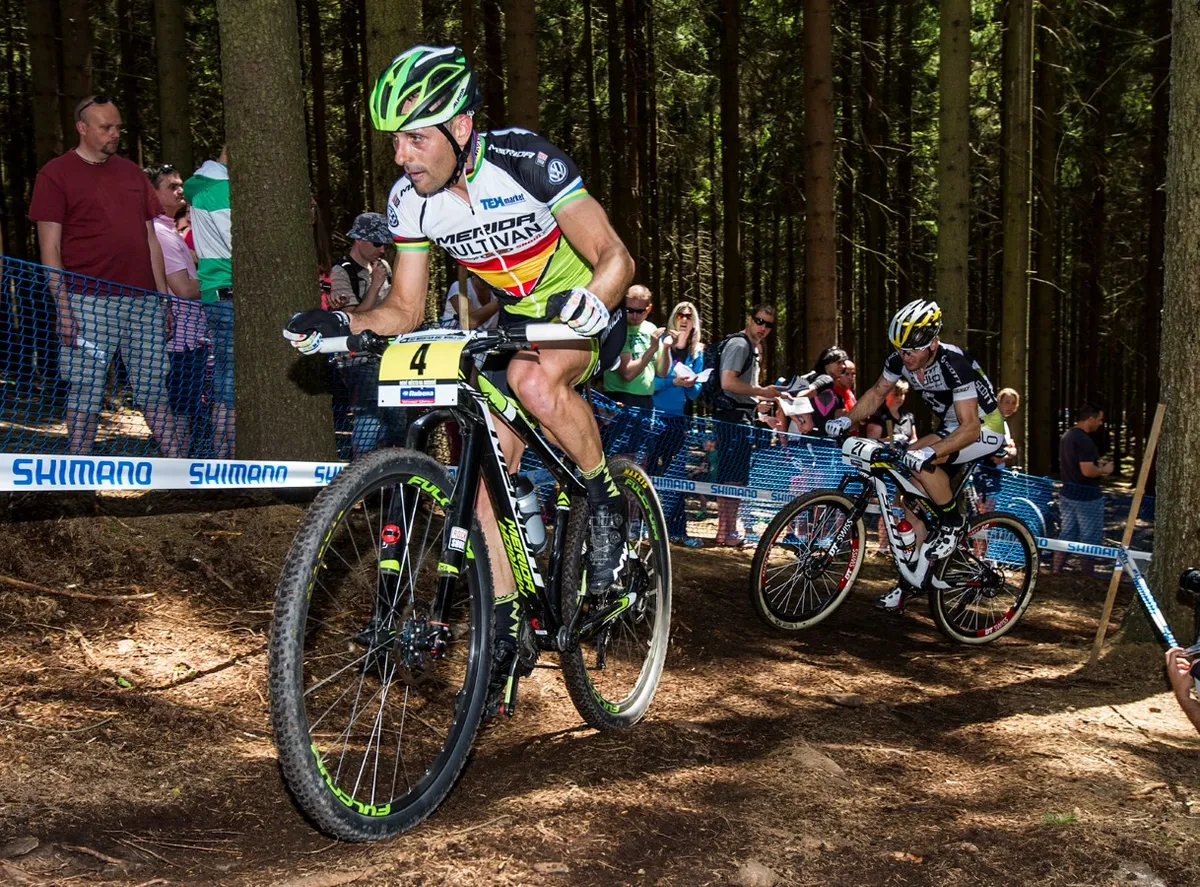
Inverted MTB forks are rarely sighted on the trails. This is due to their inherently challenging design, especially in terms of stiffness. On top of that, most contemporary brands producing inverted forks do so in small, hand-assembled batches and therefore charge a premium price.
However, due to the less extreme nature of gravel riding, we could see inverted fork design playing a role in the next generation of gravel bike suspension, such as Intend’s Samurai GR.
Who makes inverted mountain bike forks?

German manufacturer Intend BC has become synonymous with high-end, hand-crafted inverted forks, with its debut product being the Intend Edge enduro fork.
The latest Intend Edge fork costs €1,899 and boasts 180mm of travel (adjustable in 10mm increments) and 35mm stanchions. It weighs in at 2,130g (29in).
American manfacturer Push Industries is another brand specialising in high-end suspension products. Although it made its name through custom-tuned rear shocks, the brand has released its Nine.One inverted fork project, claiming it’s the "most advanced suspension product we’ve ever created".
Despite most of the recent hype around inverted forks being based on offerings from bespoke manufacturers, there are also a small number of mainstream brands that feature upside-down forks in their range. As mentioned above, Manitou’s Dorado is a long-established favourite for many downhill riders.
Cannondale’s Lefty fork also features an inverted design, as well as only having one fork leg. Designed to be as light as possible, it is for cross-country bikes and doubles as a gravel suspension fork.
